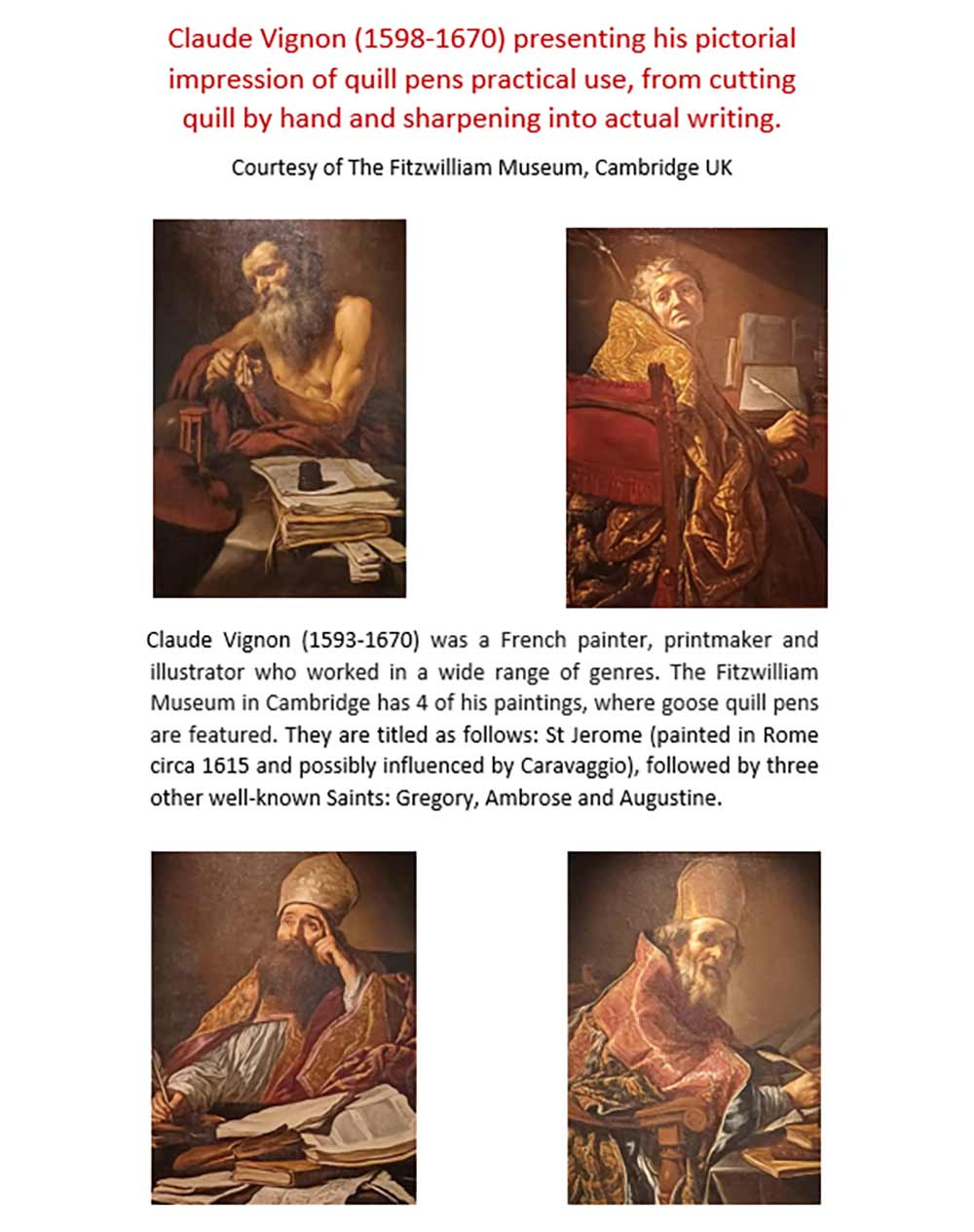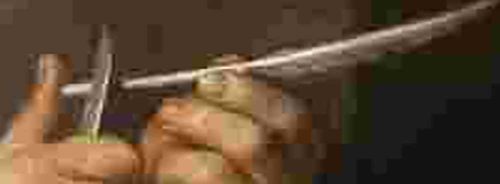A sketch of the history of the pen, courtesy of John Sorowka. This is a selected part of much larger and very comprehensive article by the same distinguished author.
During the 18th century in Europe, particularly in England, it was found that new developments in metallurgy and processing machinery made it possible to make quill substitutes from steel, these ‘pens’ could imitate the various shapes that had been cut into quills by scribes, slaves, monks, merchants et al for centuries and more than a few shapes that had not been possible previously, and now they could be made by the thousands rather than the odd few at a time, and they were needed as there was more writing to do and more people able to do it.
Several names appeared in the story around this time, the late 18th century. It is perhaps the first time, that names can be given fixed positions in time and space in this story, since an early scribe added his mark to a cuneiform tablet, positions that can be backed up by written evidence such as legal documents giving names, dates and even addresses. Some of the names involved in making the steel pens are still fairly well known in the world of writing instruments, for example Esterbrook, this company started making nibs in Birmingham….from this point on to most people with an interest in writing instruments of any sort the story might seem fairly clear… it is anything but.
At the very end of the 18th century, a specialist pen was made, this was the first pen ideally filled with a pipette, a dip stick or drip stick, (the little glass rod used to drop anything from preparations of belladonna into the eyes of fashionable ladies, to applying perfume to various delicate areas, or the fabrics close to the same areas), or a little later a rubber bulb eye dropper, this was the twin bladed lining pen designed to be used to draw lines along a straight edge, or uniform and accurate circular lines when controlled by a compass. If you dip this pen into ink without a fair amount of care it can drop the lot all over the place, usually all over a very nearly finished drawing!
This lining pen is apparently the origin of the term ‘Architect’s Point’, if so, it is called that in celebration of an architect’s draughtsman who was too rushed, or just couldn’t be bothered, to reach for his lettering pen which he certainly had available. The shape of the modern ‘Architect’s Point’ point is the same as that of a pen used to write Hebrew and Arabic and similar scripts, a shape of tip that goes back several millennia to the reed pen although many people use a quill, or any pen with an oblique nib turned through 90 degrees. Fountain pens, or instruments that could be considered as the genesis of the forerunners to the fountain pen, rather than as prototypes for the classic and modern fountain pen, had been around for a couple of centuries. There are vague mentions of pens that would write several pages without being recharged with ink, from France and Italy in the late 16th century. A hundred years later Samuel Pepys is said to have had a reservoir pen that he could carry in his waistcoat pocket, a pen that he could use anywhere and that would write a page without being dipped in an inkwell, whether these pens had gold nibs, steel nibs, or slivers of a quill doing the writing is not clear, probably several tips were tried at various times, I haven’t found enough information on them to be sure.
Most people who could write were still using quills, after all they could be had for free if the user had access to any birds from a crow through to a peacock, and knew how to prepare them, or they could be bought in London and in most other places for a few pennies. Around the middle of the 18th century someone came up with the idea, or perhaps resurrected the idea, of filling the barrel of the pen with ink, and developed a feed to supply ink as it was needed rather than burping it in blobs all over the page.
A little later still came the various filling systems, some sane and practical, one or two less so, most of them interesting to the collector and historian, some of them the bane of the user’s life, a lot of answers to the same basic question, ‘How do you get ink into the barrel, and when you have got it where you want it, how do you persuade it to stay there until needed?’ From the middle of the 18th century, we are into a world of patents and that would take up at the very least several more journals, after all there are a library full of books and several patent office archives full of information on the various design for writing instruments, patent ink wells and one hundred and one other pieces of equipment relevant to those interested in the fascinating esoteric further reaches of the world of things related to writing.
Pencils, ball pens, roller balls, felt tips, ‘liquid lead’ holders are all developed from the basic stick and piece of rock that was used to stop a finger wearing out; how, when, where they developed and by whom they were developed is a long and divergent story. Just a parting thought, today we have come nearly full circle in the story of writing instruments, many of us use our own example of the first writing instrument ever, the index finger, to write again, this time directly onto touch screens, besides this there are new technical ‘sticks’ again, the stylus that comes with some phones and digital notebooks…the equivalent of the wax tablets of the ancients….and I am sure that many of us will still make some mark in soft or wet sand given the chance.
That was a very brief, and I admit a not terribly well drawn, sketch of the history of the pen, for those who are interested perhaps we might to take a slightly less hurried journey through the story of the pen and other pieces of equipment. Who used what tools set? When they started? Where? Why this tools set? How were these tool sets used? They can get into the history of their interest, as you can see the article does not have to be particularly learned.


